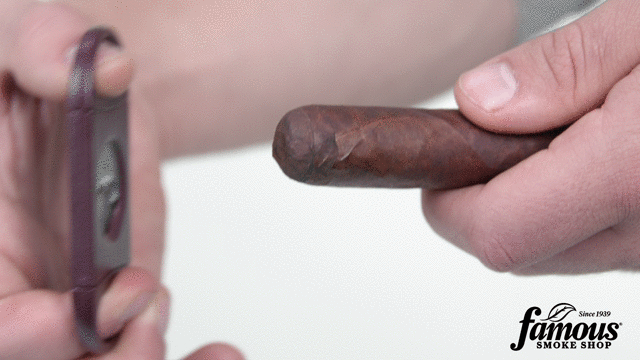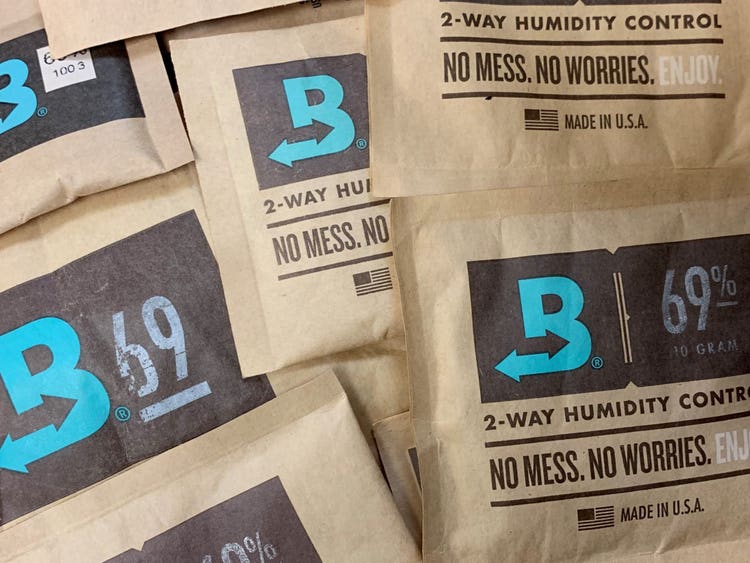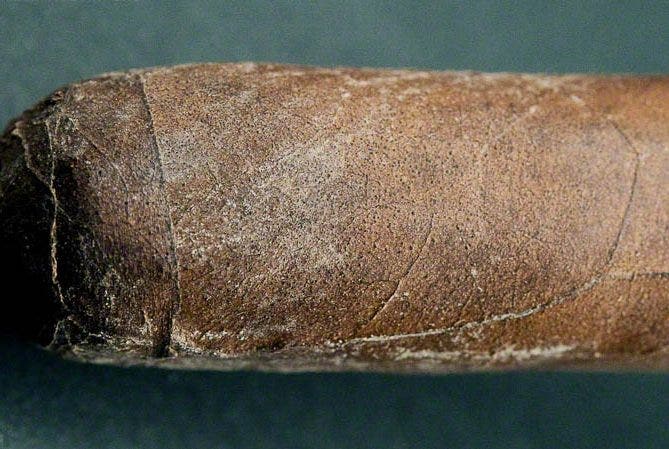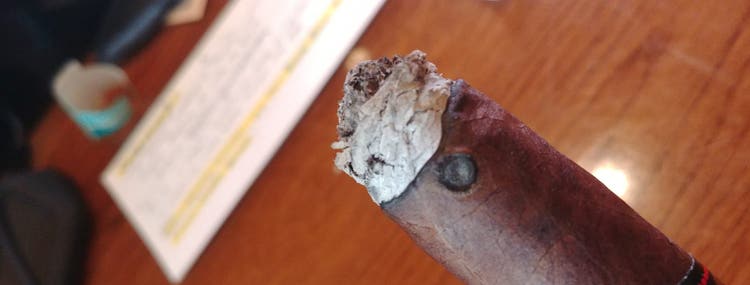
2019 CA Report: Top 10 Cigar Questions Smokers are Actually Asking
Famous Smoke Shop has been educating cigar enthusiasts for 80 years. More than a decade ago, Cigar Advisor started putting that expertise online for free because we feel that cigars are much more than a business – they’re a lifestyle. The world of cigars is brimming with you don’t know what you don’t know, and therefore, getting started, or even maintaining your prized collection as a veteran, can be an uphill challenge. Our mission is to mitigate that struggle.
Periodically, we trawl the internet ether for what you are asking most often, and when we do, we answer those questions either through articles, or Fan Mail with the goal of making it as easily digestible as possible, because – let’s be honest – if you don’t understand our explanation, we might as well not have explained it at all.
It appears that in our searching, we found a certain, “hoity toity” magazine out there, as Zman calls it, has a list of 10 so-called common cigar questions, but since we’re on the receiving end of what you all ask us every day, we know better…
Here are 10 of the most common cigar questions smokers like you are actually asking right now…
Should I keep the cello on my cigar or take it off?
As much as we’d love it to, this question will never go away. It’s kind of like the learner’s permit of cigar smoking. Monotonous as it may be, the question is valid, and the reason it’s asked so often is likely because the answer isn’t as cut and dry as most would like. The truth is, it’s really up to you.
Some benefits of keeping the cellophane on:
Some benefits of taking the cellophane off:
Is there a best of both worlds?
Actually, there is. On most cellophaned cigars, there is a flap below the foot. You can cut the cello up to the edge of the foot, allowing more moisture inside while maintaining the protective benefits simultaneously.
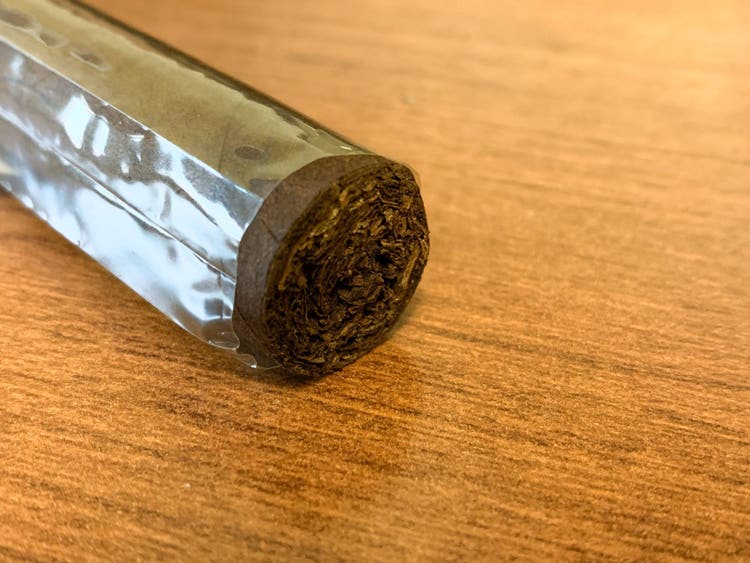
It’s important to note that cellophane is not plastic. It’s made from organic materials and is semi-porous, so humidity can pass through it. We’ve talked in the past about whether cello on or off is better, and you can see more detailed information on it here.
What’s the proper way to cut and light a cigar?
Cutting a cigar:
Without the proper execution of your cut and light, your cigar experience will be anything but a positive memory. Even worse, if you’re new, it might turn you off to cigars altogether, robbing you of a pastime that many of us find to be stress reducing and rewarding.
To get a good cut, less is more. For the sake of this article’s purposes, we’re just going to talk about a traditional straight cut, but here are some links for v-cutting and punch-cutting cigars if you need them.
Start off with a durable double-blade guillotine cutter. It’s best to use what’s called a perfect cutter, one that affixes a guard on one side to prevent you from cutting too much. If you don’t have one, my recommendation is to cut a small sliver off the cap of your cigar. Remember, you can always cut more off, but you can’t put it back!
Retract the handles and place your thumb on one side and your index and middle fingers on the other. Position the cigar straight inside the cutter’s opening and softly pinch the blades together until they’ve made contact on the cigar. Before applying too much pressure, look at where each blade is resting. If they are below the seam of the cap, your cigar will unravel once cut. Make any adjustments needed and then line it up again. Once you’re sure that your positioning is good, apply fast and even pressure from both sides. A fast cut is a clean cut. Now you’re ready to light it up!
Lighting a cigar:
Lighting a cigar isn’t simply just putting a flame to it, like you would with a cigarette; it’s a process. Make sure you have a decent torch lighter, especially if you’re new. A cigar can be lit with matches, soft-flame lighters like Bics, and even cedar spills, but a torch is by far the easiest method.
Before fully lighting your cigar, you’ll want to toast it. Line up the flame of your lighter with the foot of the cigar. You don’t want to be too close. The colored flame of the lighter should not be contacting the cigar directly at any point. Start from farther away and move the flame closer to the foot until the heat from the lighter starts to char the tobacco. Rotate the cigar evenly so that every part of the foot is seared. This process fuses the binder and wrapper of your cigar and prevents uneven burns or the unfurling of the wrapper altogether.
Once you’ve completed the toasting, you’re going to bring the cigar up to your mouth. Again, without touching the flame directly to the cigar at any time, intermittently puff on the cigar and apply the flame at a slight angle. You’ll see a flame jump out from the foot when you draw, because your puffing is pulling oxygen into the flame, allowing it to heat faster, like the reverse effect of blowing on a fire. You’ll want to turn the cigar (or move the lighter in a circular pattern if that’s more comfortable) a full 360 degrees until fully lit. You may need to do this more than once, and that’s okay. Unlike cutting, the slower and more methodically you light your cigar, the better the likelihood that you’ll get a quality burn.
How do I smoke a cigar?
While there is a lot of wiggle room on how you can smoke your cigar, there are a few pointers that may help you get the best experience.
First things first. Don’t inhale. Cigars are meant to be enjoyed on the palate inside your mouth and not in your lungs. The tobaccos are too strong for most to inhale, and even though some smokers practice this, it isn’t recommended.
The next piece of advice is simple. Pace yourself. You should keep a minimum of 30 seconds between puffs. Some smokers even wait as long as a minute. Puffing too quickly can facilitate two common issues: tar buildup and nicotine poisoning.
The faster you smoke, the hotter the cigar gets. It’s simple thermodynamics. All that heat promotes tar buildup inside the cigar, and if you get too much, the cigar will taste bitter and lose many of its flavor characteristics.
Additionally, smoking too quickly can put you on a fast-track to nicotine poisoning which causes lightheadedness, sweating, nausea, and in extreme cases, vomiting. Cigars contain 100-400 milligrams or more of nicotine, compared to the 1 or 2 milligrams in a cigarette, and because we’re puffing slowly, and not inhaling the cigars, we only receive a small fraction of its total content. If we received it all, we’d be dead after our second cigar. A lethal dose is considered to be about 500-1000 milligrams for the average adult.
Smoke slowly and enjoy it. A cigar isn’t a race, and instead of being rewarded for your speed, you’ll just end up with a foul-tasting stick, and an unhappy tummy.
How can I tell if my cigar is fresh?
If you’re new to cigars, it can be hard to differentiate between an ill-kept or well-kept smoke, but tricks like the pinch test can be invaluable, and it’ll let you know if your sticks are primed for enjoyment.
Take the cigar between your finger and thumb and pinch it gently up and down its length. It should be firm but give slightly to pressure. If there’s no give it all, it’s too dry. If it feels mushy or your fingers easily leave an impression, the cigar has too much moisture.
In addition to pinching the cigar, you can bring it up to your ear and softly roll the cigar between your thumb and fingers. You should hear a faint crackling if the cigar is in prime condition. If it crackles loudly, it’s too dry, and if you hear nothing at all, it’s too wet.
We’ll get into how to fix a deficit or surplus of moisture below.
What is the correct humidity and temperature to store my cigars?
The question of the correct temperature and humidity needed to properly store your cigars is almost as hotly contested as the cello on/off debate. Again, there’s no black and white answer to this, but there are some things you should keep in mind.
Is the 70/70 method best for storing cigars in a humidor?
For some, yes, it is. The 70/70 rule suggests that the optimal conditions for keeping cigars are 70 degrees and 70% RH (relative humidity). For many, myself included, we’ve found that cigars kept in this state are a little too moist. Sorry. I know that word sucks. In my opinion, cigars fare better when they’re slightly drier, around 65 % humidity. As long as you’re not going too far below 65% or too far above 70%, you’re probably going to be fine. That middle ground is all going to be based on your preference, so experiment and you’ll find your sweet spot.
Another trick is to make sure both of your numbers add up to 135 or close to it. If you have your humidor at 71 degrees with 65% RH, your total number is 136. That’s pretty close, so you’re golden. Just don’t come back to me with ruined cigars kept at 110 degrees and 30% humidity!
What do I do if my cigars are too dry?
If you’ve employed that pinch test we talked about and concluded that your cigars are under-humidified, or they just sound too dry when rolled between your fingers, you’re going to need to up the humidity in your humidor, especially during the drier months of winter.
Understand that this is going to take time – a minimum of a few days, up to a week or two, depending on how dry they are. If the cigars are hard as rocks, though, it’s probably a lost cause. Even if you’re able to rejuvenate them, they will have likely lost their flavor from the evaporation of the cigars’ oils. Hopefully you’ve caught this article before it’s come to that.
We recommend Boveda packs for cigar humidification as they’re both simple and highly effective at their job. Toss in an extra pack if the dryness is slight, but if they’re starting to feel really thirsty, it might be a good idea to re-season your humidor, a process you’ll want to complete biannually.
What if they’re too wet?
In the case of your cigars being over-humidified, the process is very simple. If it’s only a few of them, it could be as simple as rotating the cigars in your humidor. Since your humidifier is usually in the same position, the cigars closest will receive the most humidity and the cigars farthest away will receive the least. Rotating them allows your smokes to be as evenly humidified as possible. Take the cigars on the bottom and bring them to the top and then take the cigars from the middle and swap them with ones from the outer edges. Any cigars that you’ve identified as too wet can be removed from the humidor and you have a couple of options on how to rid them of the excess moisture.
Removing excess moisture:
One method, especially if the over humidification is only slight, is to just take those cigars out of your humidor for a day or two and let them rest. This amount of time away from humidity will have no ill-effect.
Another is to take an empty cigar box, place the damp smokes inside, and close it up for a few days. This allows for a slower drying effect than leaving it in the outside air and it’s called dry boxing. If you want an even more gradual process, you can toss a Boveda pack in with it and gradually swap them out with lower percentages. If your humidor was at 75% humidity, for example, you can put the cigars in a box with a 72% Boveda, swap it with a 69% a few days later, and finally, a 65% a few days after that. This last technique is recommended if you’re looking to lower the humidity by a significant value.
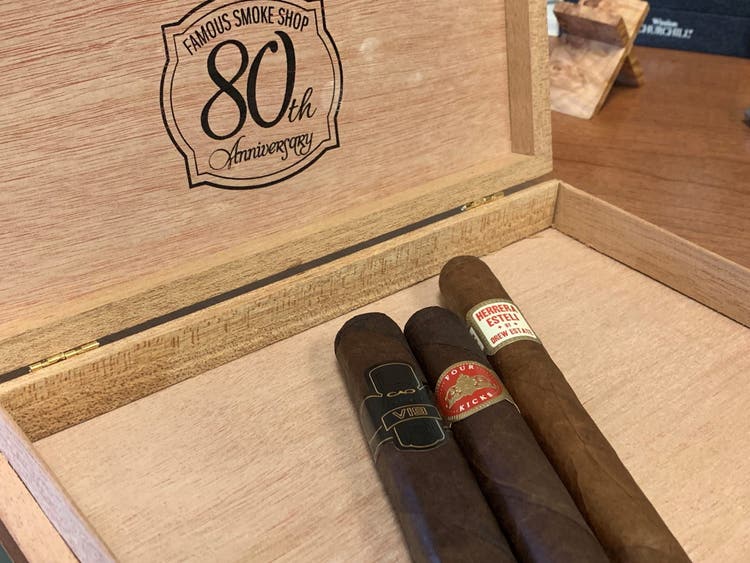
Third, and this is more so in the case that it’s all or most of your cigars, simply remove some of the humidification from your humidor. In the summer months, it’s easy to accumulate more than you need. Try opening the lid of your humidor for 24 hours and then retry the pinch tests. If things are improving, you may need to trade your 69% Boveda for a 65%. If you’re using multiple packs or other humidification devices, try removing them slowly, one at a time, until things balance out.
Even inside with central air and all of life’s comforting amenities, there’s no such thing as a static environment. Cigars need regular care and attention, and even your area’s local climate contributes largely to how much or how little of that care you’ll need to give.
What’s the difference between plume and mold (and does plume exist)?
The war between the plume (sometimes called bloom) and mold camps is longstanding and bitter and, in many cases, those who take positions on either side of the argument are often uninformed. The misinformation it leads to can cause enthusiasts to smoke bad cigars or, even worse, throw great ones in the trash.
To better understand the differences, we must identify what plume and mold are independently.
Mold:
Mold is much easier to detect than plume. Often, you’ll find it in patches on a cigar, and if you look at it closely, it appears to look white and fuzzy, almost like spiderwebs. Mold doesn’t detach from the cigar easily, and it will cause affected sticks to smell musty. Think wet basement.
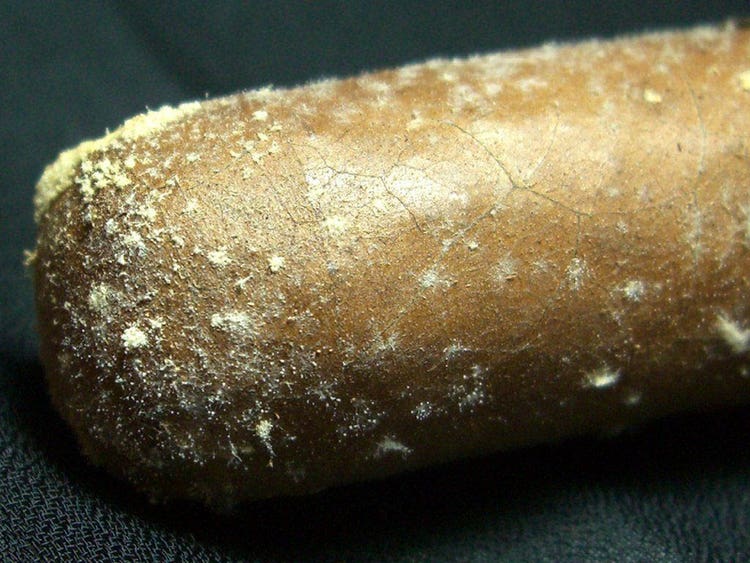
Plume:
Plume is the crystallization of oils and sugars in the leaf after they have made it to the surface of a cigar’s wrapper leaf. It will glisten faintly in the light if you turn the cigar in your hand, and it’s usually distributed more evenly than the tell-tale spottiness of mold. Cigars with plume will still smell fresh, and if you run your finger along their length, the crystals come off with ease. The phenomenon is extremely rare, and it only occurs after extended periods of aging when temperature and humidity conditions are perfect; not all cigars will develop plume. Frankly, most won’t, but if you happen upon some on your cigar, it means it’s in prime condition for puffing.
While studies have been done suggesting that all of plume is mold, the source of those studies is still questionable. Most of their samples were curated from submissions sent in by the public, and we’ve already identified that the differences are grossly misunderstood. It’s the rarity of plume that gets it so often misidentified, so it’s important to be meticulous when you notice something that looks foreign on your cigars. Sure, plume exists, but it doesn’t mean you don’t have a mold problem.
Can cigars be aged and how long will they last?
Simply put, yes, and a long time. Depending on who you talk to, cigar aging hits its peak anywhere from 5 years to 20, but most of that is going to be up to your palate. There are even some cigars that are said to have been well-kept for the better part of a century and beyond. To my palate, aged sticks begin to fizzle out after about 10 years, so I think the sweet spot is 7-10. And just an FYI…cigars are almost always aged, some for several years, before they even hit the store shelves.
Stronger blends will fare better for longer periods. They’ll tend to mellow out over time with a simple formula of the longer the aging, the more mellow they’ll become. Most experts in the industry agree that any cigar aged too long, especially mellower blends, will lose its gusto, but that doesn’t mean you won’t enjoy it. Aging is all about you, your palate, and what you like. My recommendation is to designate a separate humidor and a few cigars from each blend that you want to age. It’s going to take time, patience, commitment, and experimentation.
How do I fix a cigar that isn’t burning straight?
It doesn’t matter how careful you are at lighting your cigar. At one point or another, one is going to go sideways on you. Pun intended. While improper lighting is sometimes a cause, more often, it’s a symptom of improper humidification or human error during the bunching and rolling process. It happens. These are hand-made products, and it’s decidedly human to err.
The most common wonky burn is called canoeing. This is when the cigar is burning down one side only. Often, this issue will fix itself within a few minutes. Place your smoke down on the ashtray (affected side down) and wait for oxygen and physics to do its thing. If your situation is more stubborn, you can employ what’s called a touch-up, where you torch the unlit half of the cigar to make it even with what’s burning. Alternatively, and usually in more extreme cases, you can re-cut the cigar just past the affected area, and then, re-toast and re-light it. If you’re noticing this happening on more than one cigar in your humidor, it might be time to rotate your collection again.
Another issue you might come across is called a mousehole burn. This is when there is a channel of either air or drier tobacco inside your cigar, and it leads to the surface behind the burn line. If you’ve ever noticed a rogue burning spot appear farther up the cigar out of nowhere, that’s what happened. Heat, like anything else, takes the path of least resistance. Your fix, if needed, for this scenario is the same as canoeing, but mouseholes rarely get out of hand.
Finally, there’s tunneling. Technically, those mousehole burns are an isolated form of it on a smaller scale. When tunneling occurs, the cigar burns from the inside, leaving the wrapper and binder intact. Some common reasons for it are improper lighting, drastic changes in humidity that occur too quickly, lack of rotation, or over-humidification. Cigars gain moisture from the outside in, so if your RH is creeping up, the wrappers and binders will be the first casualties. Dry-boxing will be your friend for this scenario.
When should I stop smoking my cigar?
The short answer? When you aren’t enjoying it anymore. For some cigars, that might be an inch or two in. Others may take you to the middle or the band, and some rarer birds might have you scrounging for tweezers to get every last bit of the nub.
There’s no right or wrong answer here. It’s all up to you and your palate, but there’s no point in suffering in silence. Some reasons you might want to put the cigar down are as follows:
There’s no reason to keep smoking a cigar if any of this happens, no matter what anyone tells you. Life is too short for bad cigar experiences. If it goes south, set it down and light up something else instead!
Are cigars safer than cigarettes?
No, they are not. And given that the FDA is what it is, I’m going to be very careful about what I say on this topic from this point forward, so here’s my disclaimer in italic bold:
The opinions I’m about to give are my own and are not based on scientific studies or a medical background. I enjoy smoking cigars as is my right as an adult.
Cigars are 100% natural and do not have any of the 250-some-odd additives, including things like cyanide, ammonia (which may increase nicotine absorption and make cigarettes more addictive), formaldehyde (embalming fluid), and even arsenic, included in their list of ingredients. It’s simply just tobacco. I know this because I’ve seen the entire process with my own eyes in Nicaragua. Personally, I feel that cigars aren’t nearly as bad for you. But that’s just my opinion.
After smoking cigarettes for more than 15 years, and quitting cold turkey, my dependency on cigars is more or less non-existent. I don’t crave them like I craved cigarettes. I don’t feel like I can’t go without them. Cigars center and relax me. And while I’m aware that things like cancer, and other tobacco-related illnesses are a possibility, I also know that those medical problems can be caused by just about anything else, too…pollution, excess consumption of meat and alcohol, gasoline fumes from the fill-up station…the list goes on.
Smoking cigars, just like anything else, should be done in moderation and moderation is the key to life.
Bonus: What’s different about box-pressed cigars?
In a nutshell, box-pressed cigars are just another option to be enjoyed. Instead of solely being rolled cylindrically like a normal Parejo, box-pressed cigars are tightly placed in boxes that are stacked on top of one another to give it a squared shape, or molds (called trunk pressing) that are held together with clamps to force it into a box-like state.
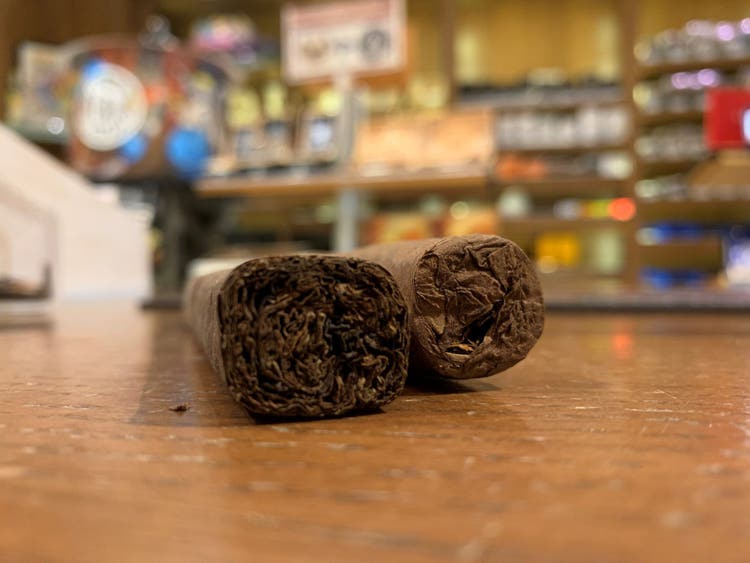
Manufacturers have experimented with these shapes in recent years and you can find variations like Plasencia’s hexagonal Alma Fuerte Sixto, or the oval-shaped San Lotano Oval from AJ Fernandez.
Most agree that there are pointed differences to the shapes and how they smoke. Box-pressed cigars tend to smoke cooler, and some argue that they burn more evenly, but as with most of what you’ll find in the incredible world of cigars, these are all subjective values and your experience will be unique.
I hope that this article answered one or many of the inquiries you’ve had about cigars. Let me know what your most burning question has been in the comments below!
